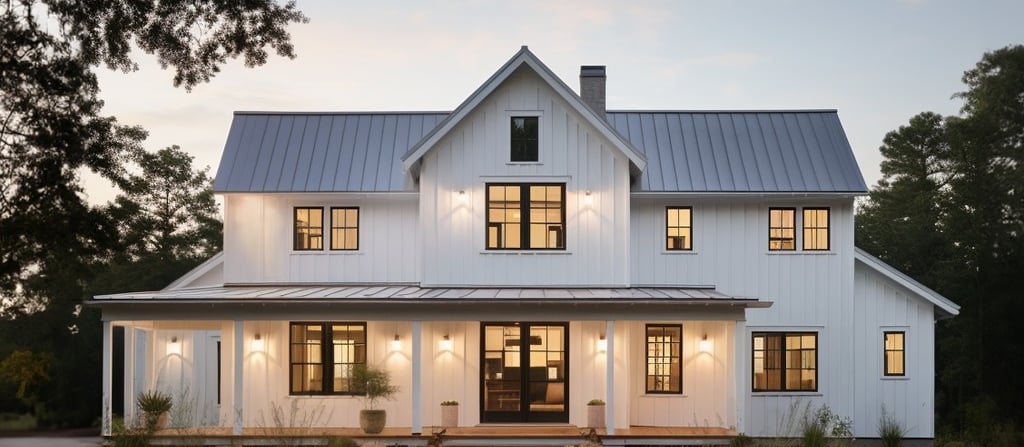Building a Greener Future: The Environmental Impact of Homes and the Importance of Sustainable Design
Eco-friendly homes go beyond just using sustainable materials. Without proper design and construction, a home may face long-term performance issues, leading to costly repairs, increased waste, and a larger environmental footprint. In this post, we explore the importance of thoughtful planning and engineering to build homes that are durable, efficient, and truly sustainable.
9/16/20243 min read


Understanding the Environmental Footprint of Homes
Residential buildings significantly impact the environment through energy consumption, resource use, and waste generation. In fact, homes account for about 20% of total energy consumption in the U.S., according to the U.S. Energy Information Administration, with a heavy reliance on fossil fuels for heating, cooling, and electricity, all of which contribute to carbon emissions and climate change.
Beyond energy use, construction materials also play a role in environmental degradation. Materials like concrete contribute to carbon emissions, and their production and disposal can harm natural habitats. By choosing sustainable materials, we can reduce the ecological footprint of homes and promote greener alternatives.
Additionally, waste from construction and renovations adds to the problem. The EPA estimates that construction debris makes up 27% of U.S. waste. Adopting practices like recycling and waste reduction can help minimize this impact.
Understanding how homes affect the environment is key to creating a culture of sustainability. By focusing on energy efficiency and responsible building practices, we can collectively work toward a greener future.
The Case for Energy Efficiency in Building
Energy efficiency is crucial in today’s construction practices. It not only helps the environment but also offers financial benefits to homeowners. Better insulation, energy-efficient windows, and sustainable materials all play a role in reducing energy consumption.
Proper insulation reduces heating and cooling needs, while energy-efficient windows help maintain a comfortable temperature inside. Sustainable materials, sourced from renewable resources, lower the carbon footprint during construction and contribute to long-term environmental benefits.
The widespread adoption of energy-efficient practices can significantly cut greenhouse gas emissions, promoting a healthier planet and creating cost-saving opportunities for homeowners.
Pest Management: A Foundation for Sustainable Homes
Preventive pest control measures, such as sealing entry points and regular inspections, help maintain the integrity of homes and reduce energy use. Eco-friendly pest control solutions, like essential oils and diatomaceous earth, offer effective alternatives to harmful chemicals, promoting healthier indoor air and a safer environment.
Incorporating these green pest management strategies supports both sustainability and energy efficiency in homes. Of course, the best strategy is to plan ahead, adding non-toxic chemical and physical barriers installed on the foundation and on wood structures during a build, specifically at pipe penetrations, and any exterior gaps within siding materials to prevent any possible infestation in the future.
Taking Action: Steps Toward Environmentally Friendly Homes
Building eco-friendly homes starts with individual actions. Choose green builders who prioritize sustainability, and incorporate renewable energy sources like solar panels to reduce reliance on fossil fuels and lower greenhouse gas emissions.
Community involvement is key. Engage with local environmental organizations and advocate for energy-efficient building codes. Even small actions, when combined, make a big difference in creating a sustainable future.
Building a Quality Home to Reduce Environmental Impact
Building a high-quality home from the start is one of the most effective ways to minimize its long-term environmental impact. When a home is designed with care and built using sustainable materials and techniques, it reduces the need for future repairs, pesticides, and excessive energy consumption—leading to a more eco-friendly and efficient living space.
1. Pest Prevention by Design
A well-built home helps prevent pest infestations naturally, reducing the need for chemical pesticides later on. This begins with the use of physical pest barriers, such as properly sealed foundations, tight-fitting doors and windows, and insect-resistant materials like treated wood. By focusing on these preventive measures, homeowners can avoid pest damage to the structure and lower the need for toxic treatments that can harm both people and the environment.
2. Energy Efficiency by Design
Energy consumption is one of the biggest contributors to a home's environmental footprint. A well-insulated, airtight home significantly reduces the need for heating and cooling, cutting down on energy use and associated greenhouse gas emissions. Quality construction features, like high-performance windows, proper insulation, and energy-efficient appliances, all play a role in reducing long-term energy consumption.
Moreover, homes that utilize passive solar design—taking advantage of the sun’s natural light and heat—can further reduce energy demands. By orienting windows and living spaces to capture sunlight in winter and minimize it in summer, homeowners can rely less on artificial heating and cooling.
3. Durability and Longevity
Building a home with durable materials that require minimal maintenance helps extend the life of the structure and reduces the need for future repairs or replacements. This lowers the consumption of additional resources over time, helping to conserve materials and reduce waste. Choosing materials that are not only strong but also sustainably sourced can further lessen the environmental impact of the home’s construction.
4. Water Efficiency
Incorporating water-efficient systems into the home, such as rainwater harvesting, low-flow fixtures, and drought-tolerant landscaping, reduces the strain on local water supplies. These water-saving features minimize the environmental impact of the home by reducing the need for excessive irrigation and water waste, further enhancing sustainability.
By building a home that prioritizes quality, energy efficiency, and sustainability from the outset, homeowners can reduce their long-term environmental impact. A well-designed home lowers energy consumption, minimizes pest control needs, and reduces resource use, creating a more eco-friendly living space for years to come.
